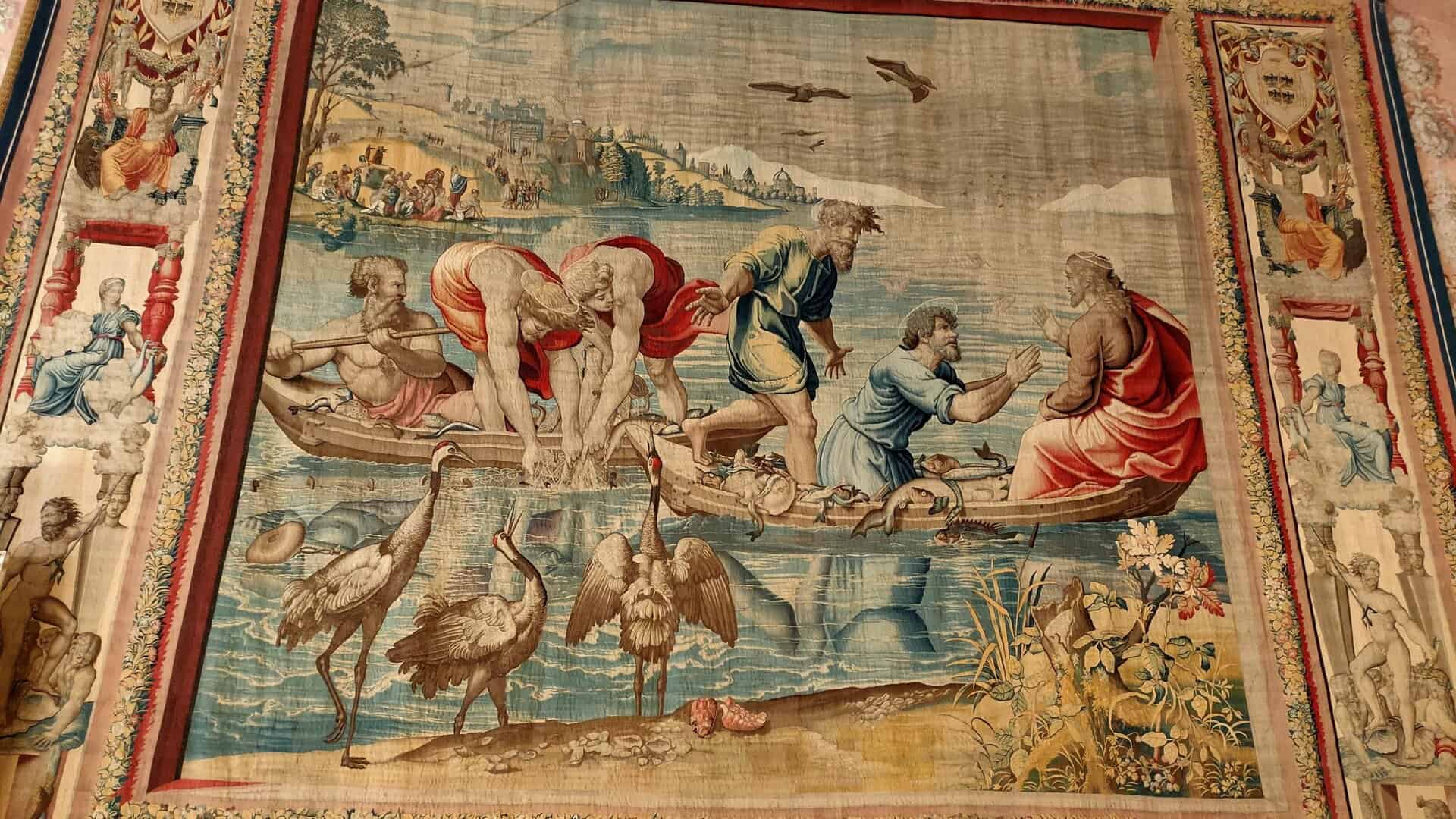A woven treasure: the Flemish tapestries
The tapestries of the Ducal Palace in Mantua are worth a visit to the palace alone. There are nine tapestries in wool and silk, woven in Brussels, in Flanders, on patterns prepared by one of the greatest stars of the Renaissance: Raffaello Sanzio.
Their story begins in Rome, where Raphael and his workshop created ten cartoons for the tapestries that Pope Leo X wanted to exhibit in the Sistine Chapel.
Weaving in Brussels
Une fois terminés, les cartons sont envoyés à Bruxelles, à l’atelier du tis Pieter van Aelst, où les tapisseries prennent vie. Les œuvres sont ensuite envoyées à Rome, mais les cartons restent à Bruxelles. À cette époque, il était normal que les cartons soient réutilisés et partagés entre différents tisserands.
The tapestries of the Ducal Palace in Mantua are part of these second weavings and were purchased by Cardinal Ercole Gonzaga around 1555, when he was bishop of Mantua and regent of the duchy. Today, seven of the ten original cartoons are kept in London at the Victoria and Albert Museum.
The tapestries in the Doge's Palace
The tapestries represent scenes from the Acts of the Apostles and are displayed in three rooms of the tapestry apartment:
Hall of the Eagle
- Miraculous catch of fish
- Conversion of the Proconsul (also known as Sacrifice of Lystra)
- Stoning of St. Stephen
Hall of the Lion
- Delivery of the keys
- Preaching of St. Paul in Athens
- Paul's Conversion
Hall of the Empresses
- Death of Ananias
- Sacrifice in Lystra
- Healing of the lame
Characteristics of the tapestries
The scenes depicted are marked by an unprecedented monumentality for the time.
Raphael sets the episodes outdoors, among squares, natural landscapes and architectural interiors, with a powerful and innovative visual narrative. All tapestries bear the Gonzaga family crest on the borders. However, there are not ten as in the Vatican series, but nine, since the piece depicting St. Paul in prison is missing.
An extraordinary collection
The Gonzaga were great collectors and owned over three hundred tapestries. Not all of them were of this size, but among the most valuable are:
- The Vatican tapestries with stories of St. Peter and St. Paul
- The tapestries preserved in Urbino
- And of course those of Mantua, today considered among the best preserved
Their conservation is also due to the restoration promoted in 1866 by the government ofEmperor Franz Joseph of Austria. The tapestries returned to the Doge's Palace in 1919, where they are still on display today.
Guided tour of the Palazzo Ducale tapestries
To discover these masterpieces in person, book a guided tour of the tapestries of the Ducal Palace in Mantua.
info@guideverona.net
+39 3398875599







